CWRP Information Sheet #119E. (2012). Toronto, ON: Faculty of Social Work, University of Toronto.
Barbara Fallon and Nico Trocmé with the OIS-2008 Research Team recently initiated several knowledge mobilization activities. One of the OIS-2008 knowledge mobilization projects focuses on increasing research capacity in Ontario child welfare agencies. The objectives of this project include using OIS-2008 data to answer agency-driven research questions relevant to policy and practice, and to promote and facilitate collaboration among the OIS-2008 research team and child welfare agencies. Through collaboration with the OACAS and child welfare agencies across Ontario, agency representatives will work with the OIS-2008 research team over the next year to produce 15 agency-authored information sheets. Barbara Fallon is the Principal Investigator for this project and Nico Trocmé is a co-investigator, with funding provided by the Social Sciences and Humanities Research Council of Canada.
If you work at a child welfare agency in Ontario and are interested in participating in this project, or for more information on this and other projects related to the OIS-2008, please contact Barbara Fallon (barbara.fallon@utoronto.ca, 416-978-2527) or Melissa Van Wert (melissa.vanwert@utoronto.ca, 416-978-1386).
Introduction
The Ontario Incidence Study of Reported Child Abuse and Neglect, 2008 (OIS-2008) is the fourth provincial study to examine the incidence of reported child maltreatment and the characteristics of children and families investigated by child welfare authorities in Ontario. This fact sheet examines the characteristics of children and families whose cases remain open for ongoing child welfare services at the end of the initial investigation.
Background to the OIS-2008
From 1998 to 2003, the OIS found that rates of investigated maltreatment had doubled. This pattern may reflect changes in detection, reporting, and investigation practices rather than an increase in the number of children being abused and neglected. Four changes are particularly important to consider: increased reporting by professionals, increased reports of emotional maltreatment and exposure to intimate partner violence, more children investigated in each family, and increased substantiation rates. These changes are consistent with shifts in the context of Ontario child welfare.
Due to changes in investigation mandates and practices over the last 10 years, the OIS-2008 differed from previous cycles in that it tracked both risk-only investigations and maltreatment investigations. Risk-only investigations were those in which a specific past incident of maltreatment was not suspected or alleged to have occurred, but rather a constellation of factors lead to concerns that a child may be maltreated in the future (e.g., caregiver with a substance abuse issue).
Methodology
The OIS-2008 used a multi-stage sampling design to select a representative sample of 23 child welfare agencies in Ontario and then to select a sample of cases within these agencies. Information was collected directly from child protection workers on a representative sample of 7,471 child protection investigations conducted during a three-month sampling period in 2008. This sample was weighted to reflect provincial annual estimates. After two weighting procedures were applied to the data, the estimated number of maltreatment-related investigations (i.e., maltreatment and risk-only investigations) conducted in Ontario in 2008 was 128,748.
Findings
There was an estimated 128,748 maltreatment-related investigations conducted in Ontario in 2008. Of these investigations, an estimated 87,025 cases were for an incident of maltreatment and an estimated 41,723 were risk-only investigations. At the end of the initial investigation, an estimated 31,693 (25%) cases remained open for ongoing child welfare services while an estimated 97,030 (75%) cases were closed.
Figure 1 presents the household source of income in maltreatment-related investigations in Ontario in 2008. Cases which remained opened for ongoing services were more likely than cases which were closed to note that the household source of income was from part time work or other benefits/employment insurance, and less likely to note that the household was supported by full time income.
Figure 1: Household source of income in maltreatment-related investigations in Ontario in 2008
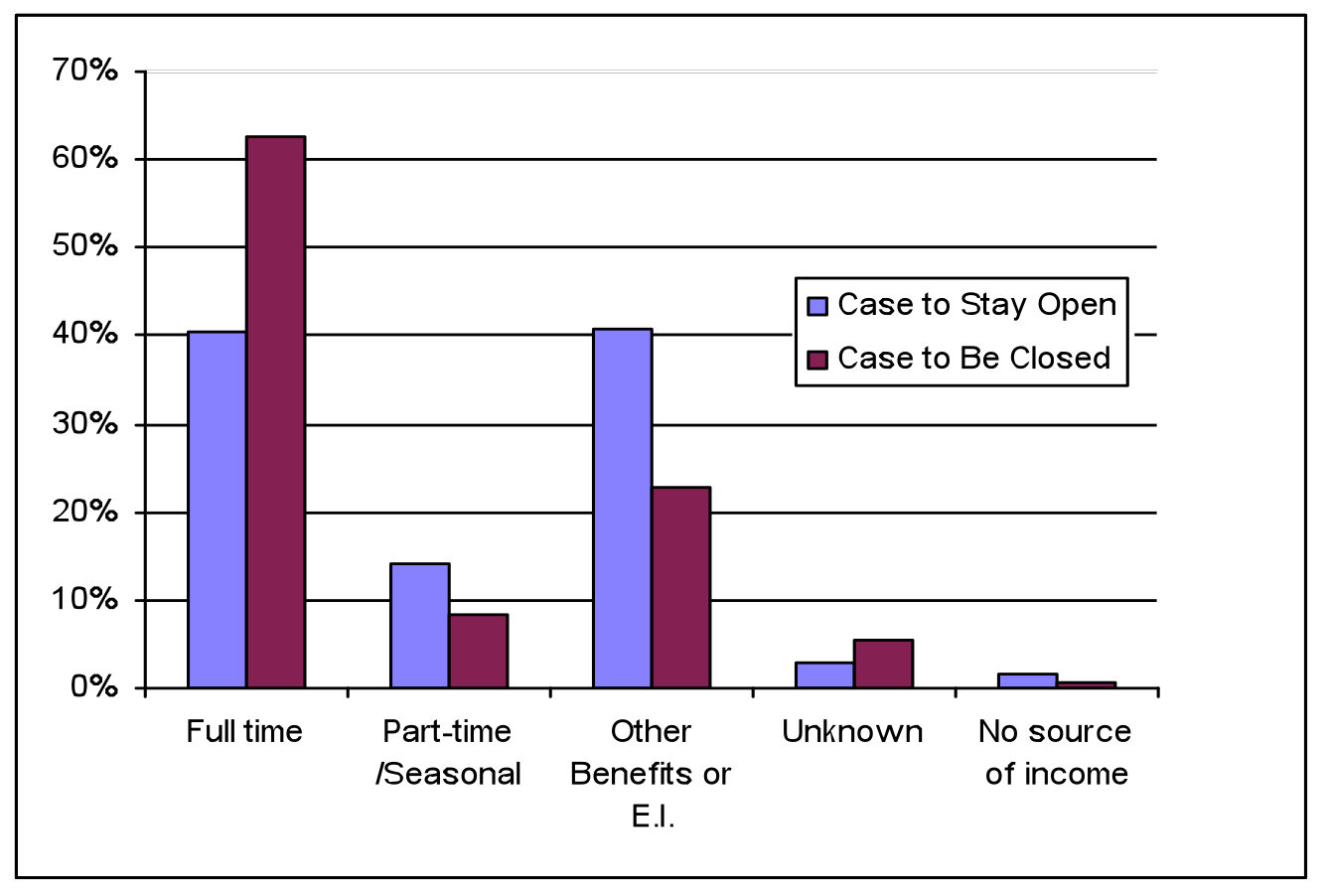
In Figure 2, the number of caregivers in the home in maltreatment-related investigations is outlined. Cases which remained opened for ongoing child welfare services were more likely to note a single caregiver (44%) than cases which were closed (35%).
Figure 2: Number of caregivers in maltreatment-related investigations in Ontario in 2008
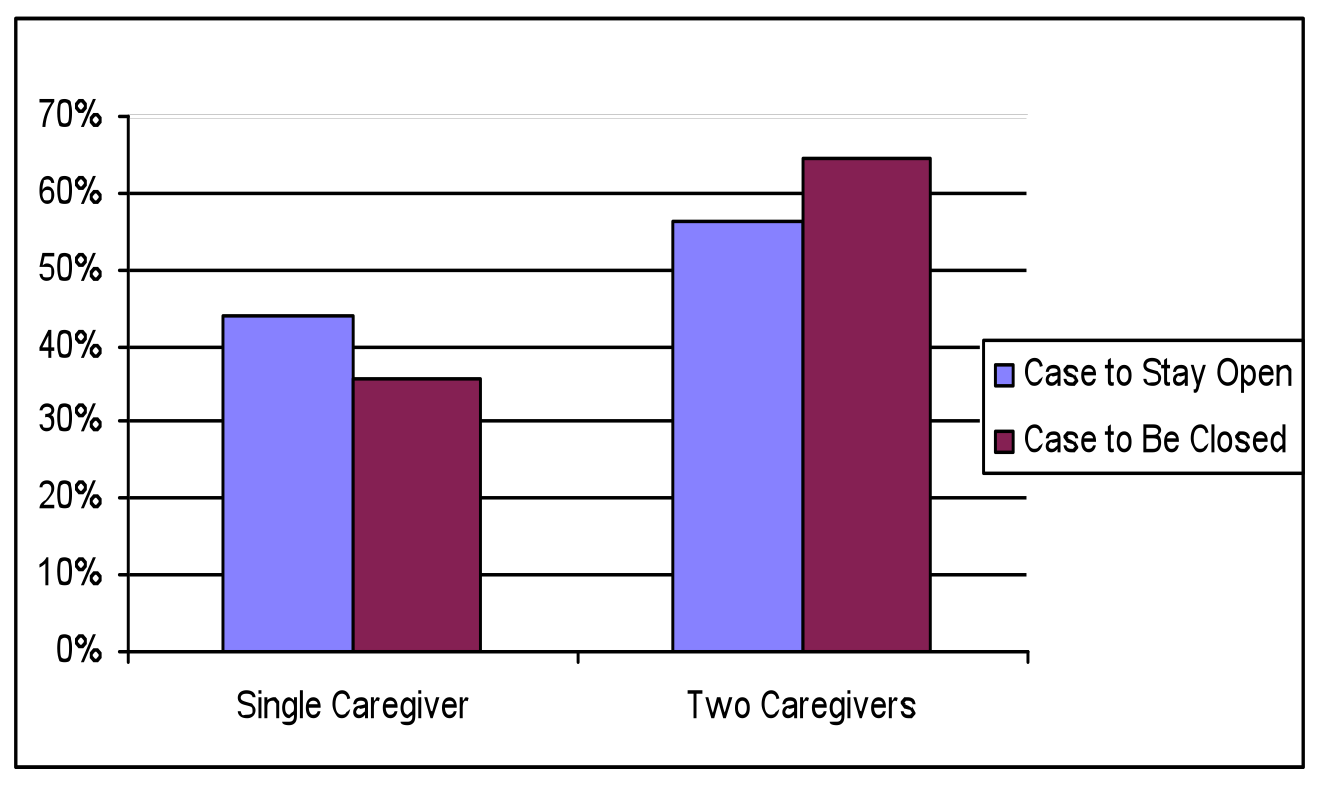
Housing type is presented in Figure 3. Of the estimated 31,693 cases which remained opened for ongoing child welfare services, 27% of families owned their home, 43% rented their home, 16% lived in public housing, 4% lived in band housing, and 2% lived in a hotel or shelter. In comparison, of the estimated 97,030 cases which were closed, 43% of families owned their home, 36% rented their home, 10% lived in public housing, 2% families lived in band housing, and 1% lived in a hotel or shelter.
Figure 3: Housing type in maltreatment-related investigations in Ontario in 2008
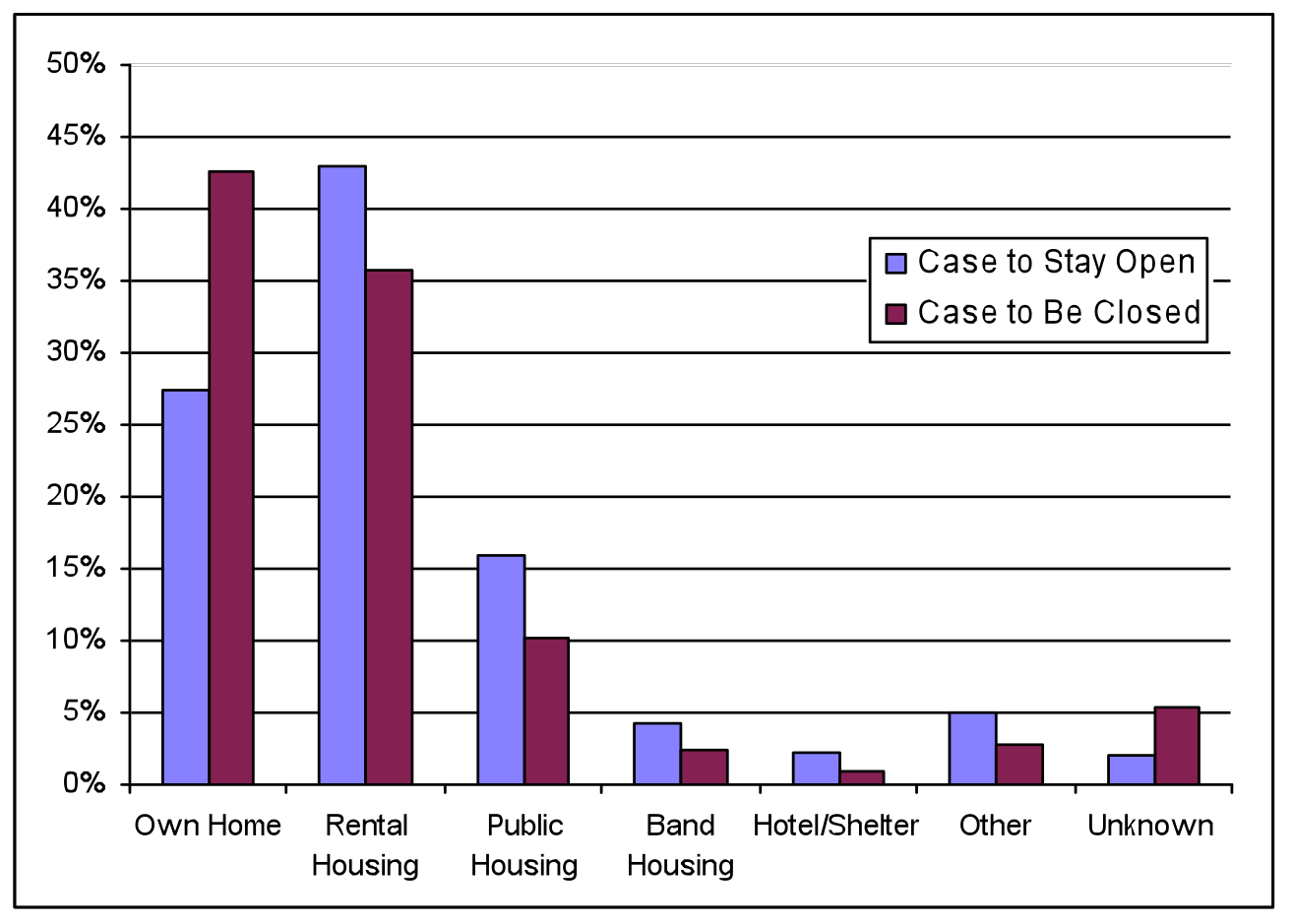
Figure 4 outlines whether or not the family regularly runs out of money for basic necessities in maltreatment-related investigations in Ontario in 2008. Investigations that remained open for ongoing child welfare services were more likely to note that the household regularly ran out of money for basic necessities (20%, or 6,189 cases), compared to closed cases (4%, or 4,353 cases).
Figure 4: Running out of money for basic necessities in maltreatment-related investigations in Ontario in 2008
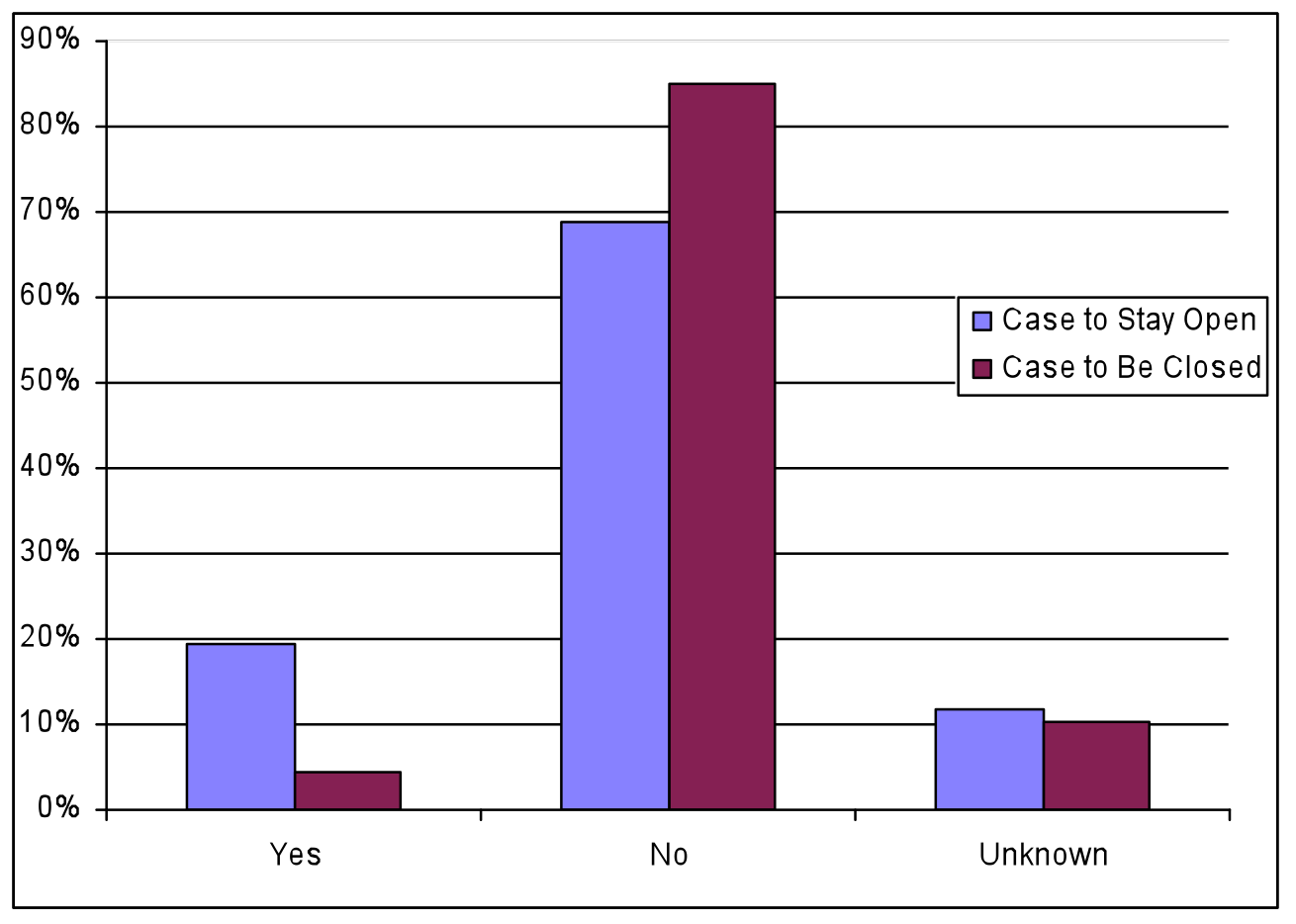
In Figure 5, primary caregiver functioning concerns are shown. In cases which remained opened for ongoing child welfare services, all of the primary caregiver functioning concerns were noted more often compared to cases which were closed. Few social supports (50%), victim of domestic violence (41%), and mental health issues (39%) were the most often noted primary caregiver functioning concerns for cases which remained open for ongoing child welfare services. Similarly, for cases which were closed, victim of domestic violence (23%), few social supports (21%), and mental health issues (13%) were the most noted concerns.
Figure 5: Primary caregiver functioning concerns in maltreatment-related investigations in Ontario in 2008
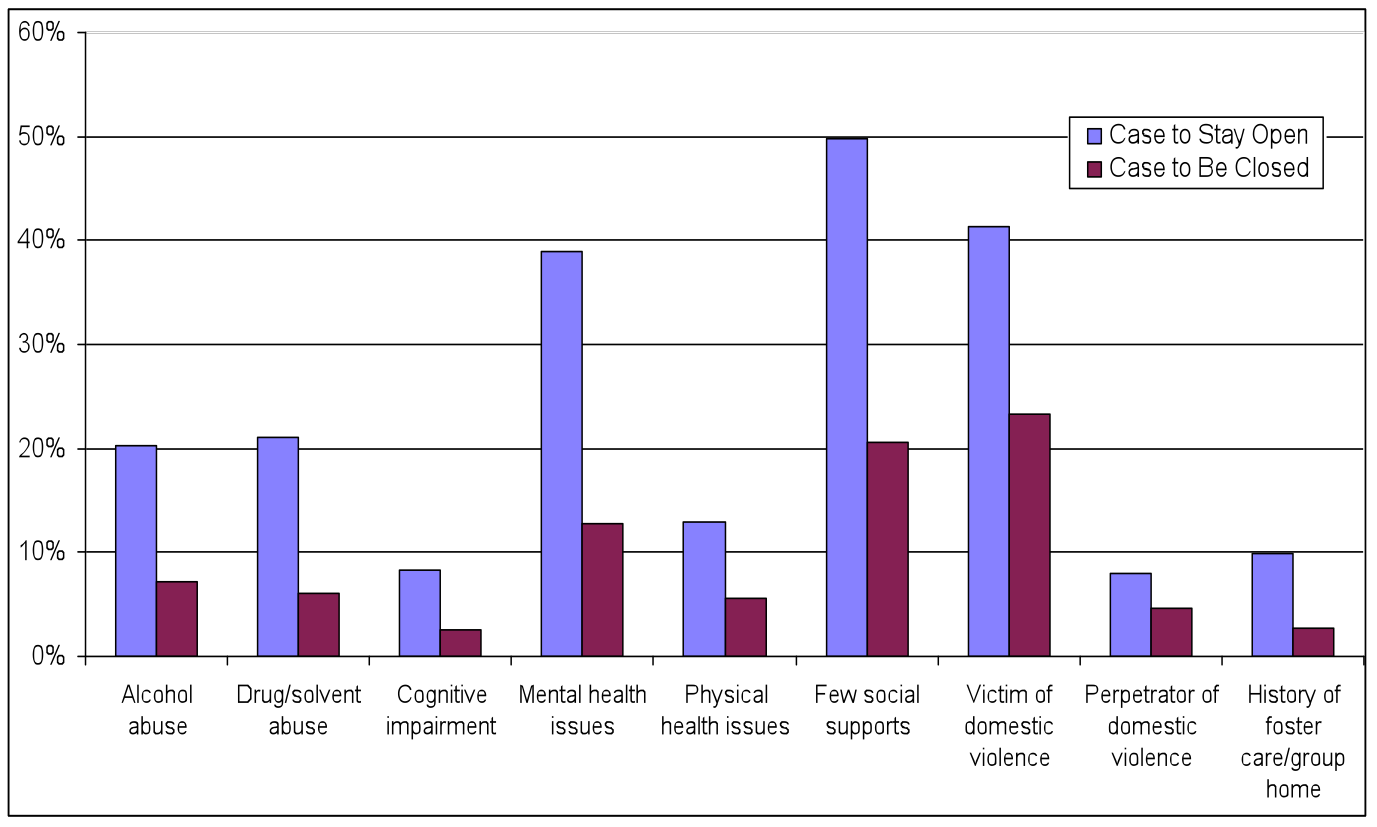
Child functioning concerns are displayed in Figure 6. All of the child functioning concerns were reported at higher rates among cases which remained open for ongoing child welfare services compared to cases which were closed. Internalizing and externalizing behaviours were the most common noted child functioning concerns for both types of cases. For cases which remained open for ongoing child welfare services, internalizing behaviours were noted in 31% of cases compared to 13% of cases which were closed. Externalizing behaviours were noted in 36% of cases which remained open for ongoing services and 23% of cases which were closed.
Figure 6: Child functioning concerns in maltreatment-related investigations in Ontario in 2008
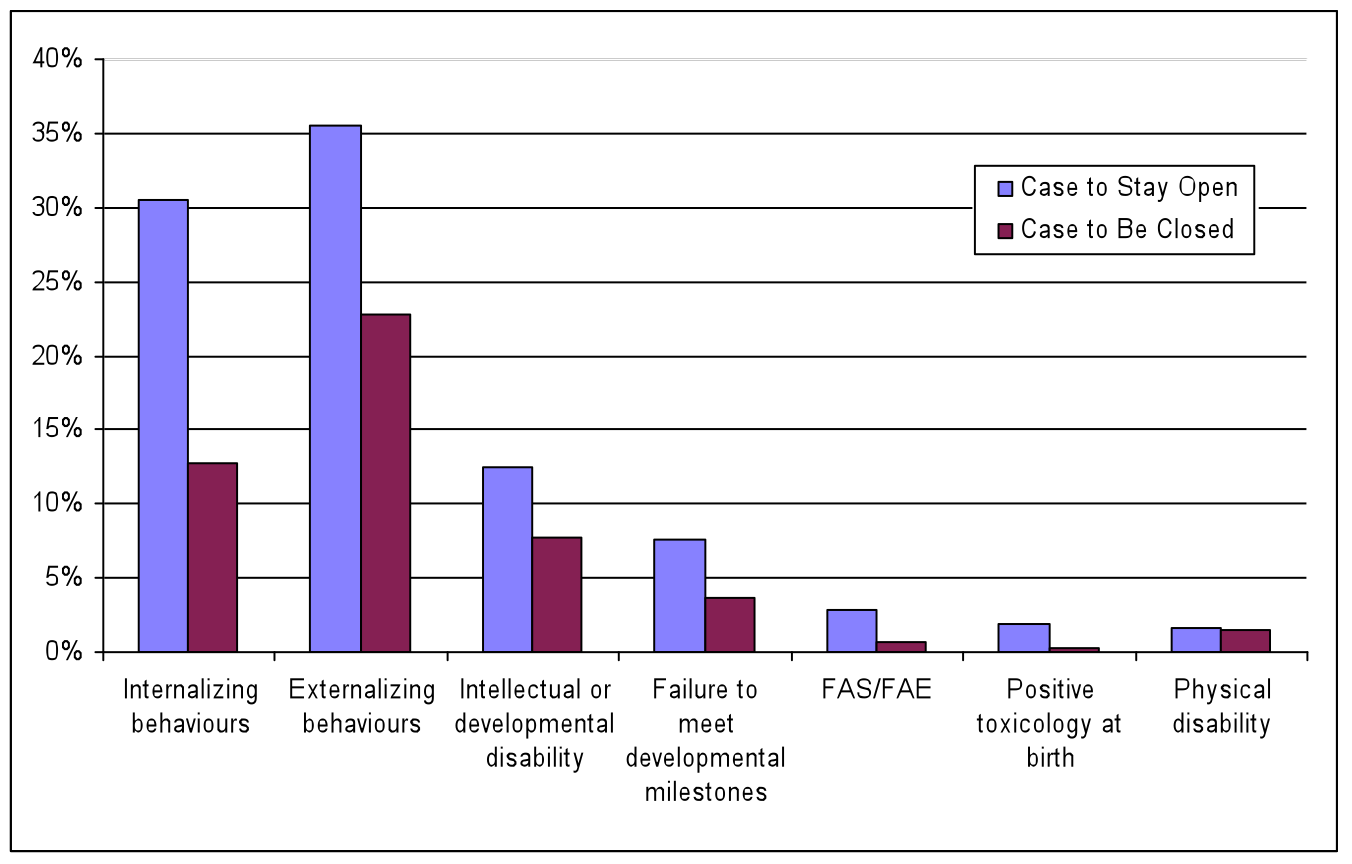
Figure 7 depicts the substantiation level in maltreatment-related investigations in Ontario in 2008. Cases which were substantiated were more likely to remain open for ongoing child welfare services while cases which were unfounded were much more likely to be closed.
Figure 7: Substantiation level in maltreatment-related investigations in Ontario in 2008
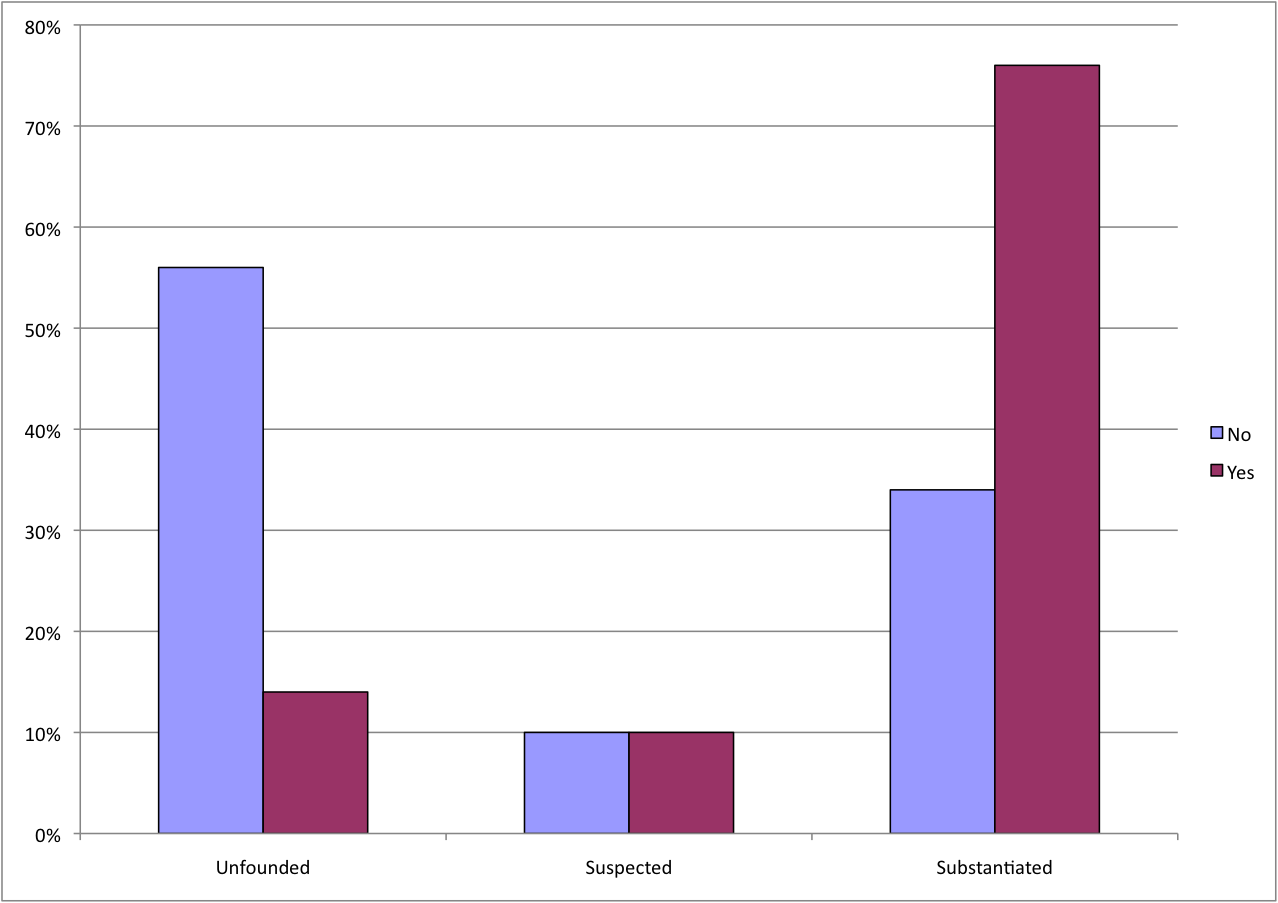
Figure 8 displays the primary form of maltreatment noted among substantiated maltreatment investigations. Cases of physical abuse, emotional maltreatment, and exposure to intimate partner violence (IPV) were more likely to be closed than stay open for ongoing child welfare services. Cases of sexual abuse and neglect were more likely to stay open for ongoing child welfare services than to be closed.
Figure 8: Primary Form of Maltreatment in Substantiated Maltreatment Investigations in Ontario in 2008
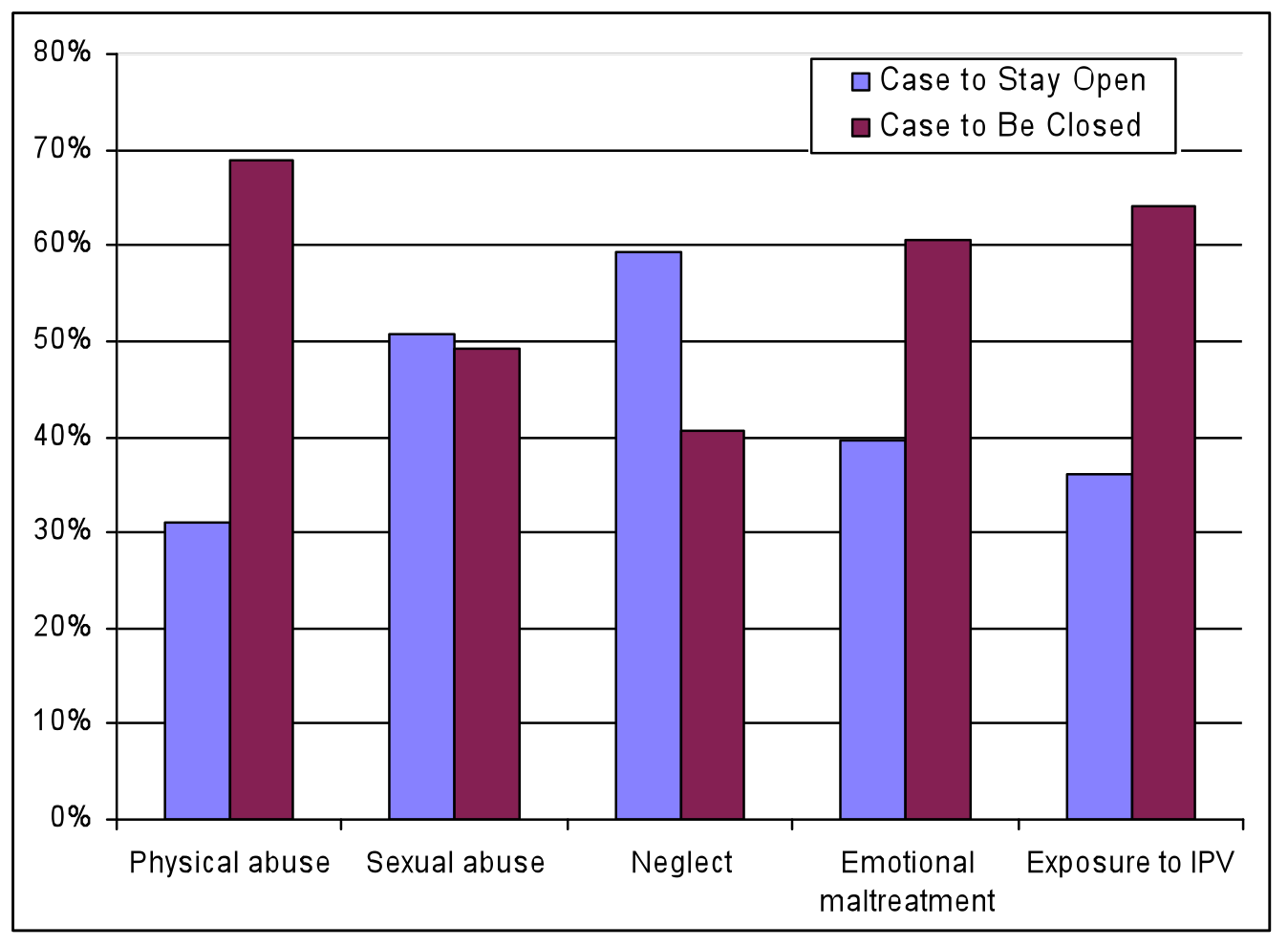
The profile of investigations that remain open for ongoing child welfare services differs from the profile of investigations that were closed. Overall, investigations that remain open for ongoing services note more child, caregiver, and household concerns.
Limitations of the OIS-2008
The OIS-2008 does not include information about unreported maltreatment, or cases that were only investigated by police. Reports that were made to child welfare authorities but screened out before they were investigated are not included, and reports on cases currently open at the time of case selection are also not included. The study does not track longer service events that occur beyond the initial investigation.
Originally published in the Ontario Association of Children's Aid Societies (OACAS) Journal, Volume 57, Issue 1, 2012.
